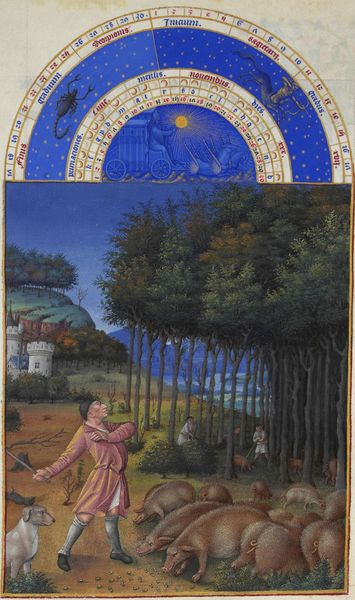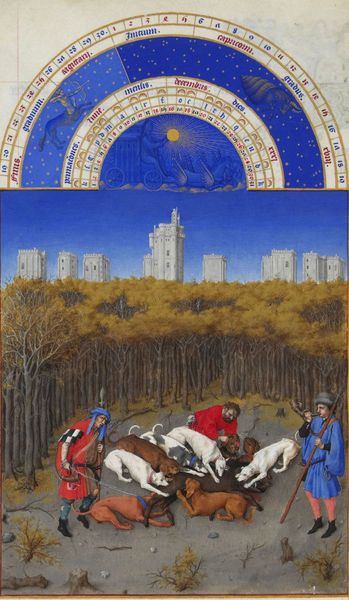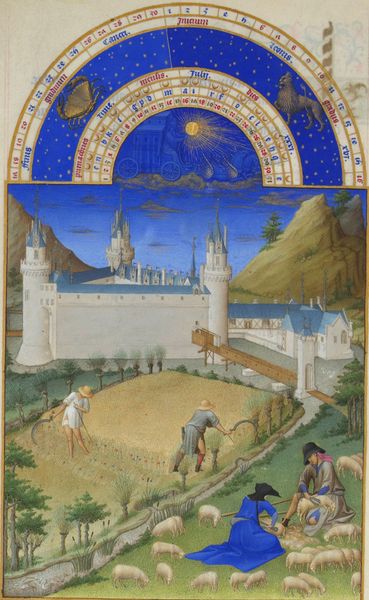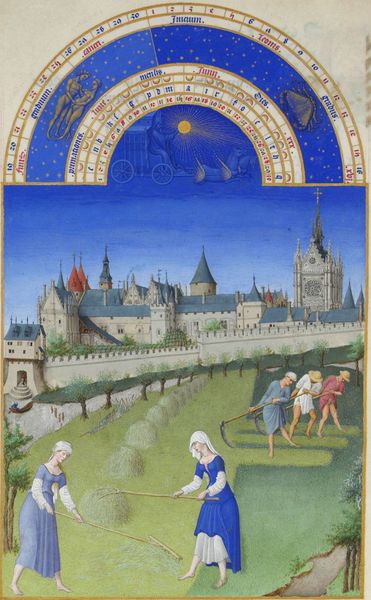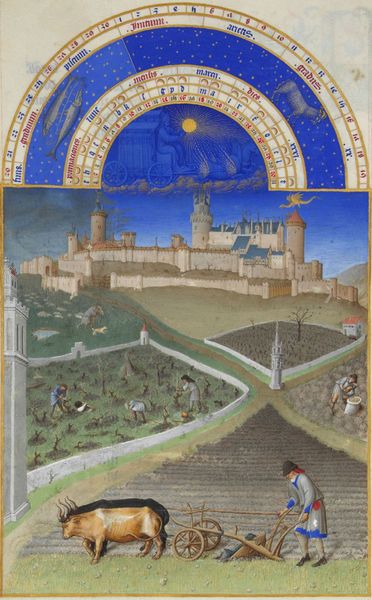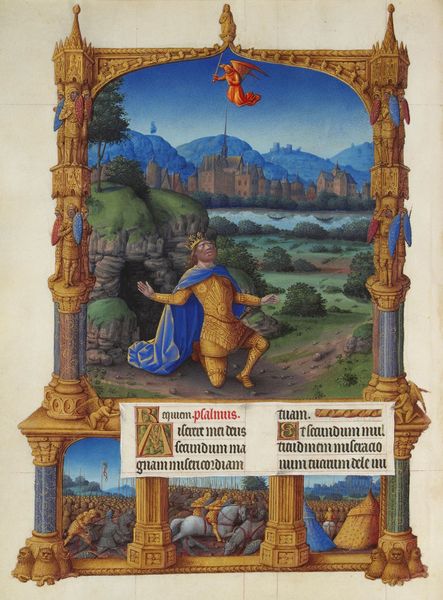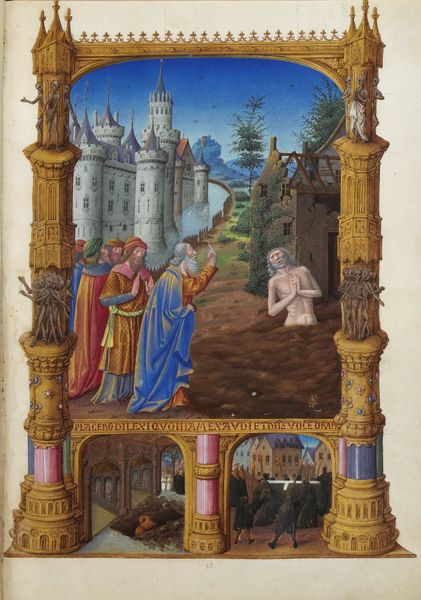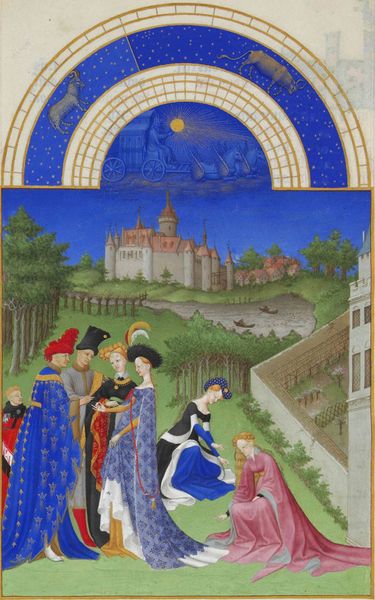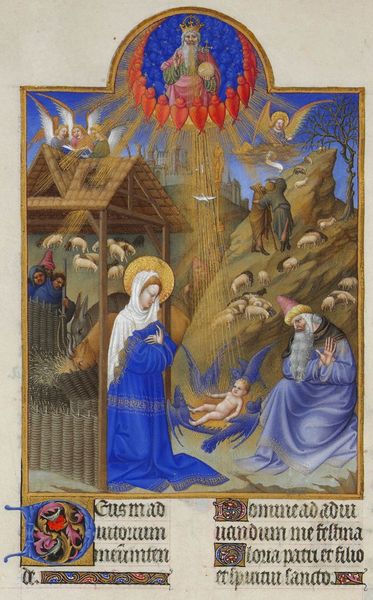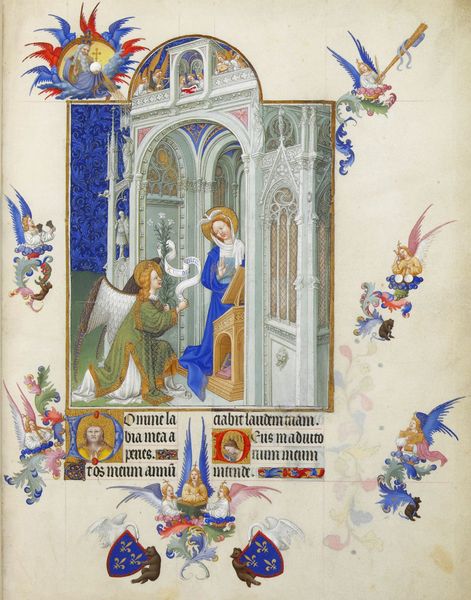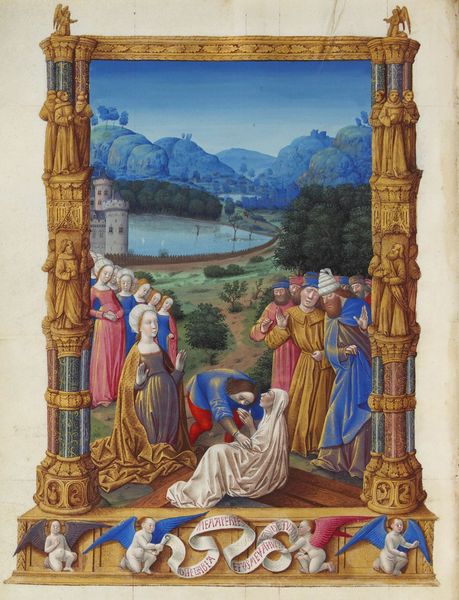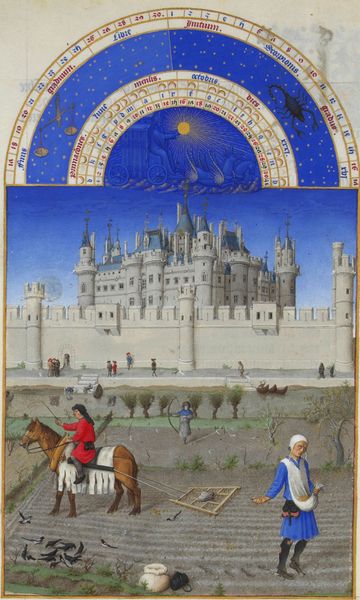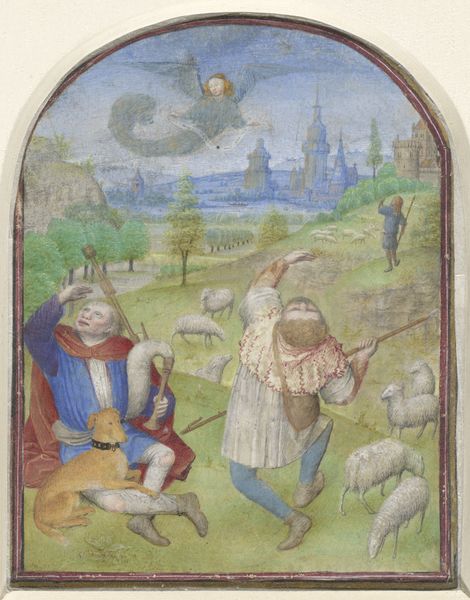
Calendar: February (Farmyard Scene with Peasants) 1416
0:00
0:00
limbourgbrothers
Musée Condé, Chantilly, France
watercolor
#
medieval
#
water colours
#
landscape
#
winter
#
oil painting
#
watercolor
#
watercolour illustration
#
genre-painting
#
northern-renaissance
#
miniature
#
watercolor
Copyright: Public domain
Curator: I find myself drawn into the delicate stillness of "Calendar: February," painted around 1416 by the Limbourg brothers. It's from the Très Riches Heures du Duc de Berry. Editor: It's intensely beautiful, isn't it? But melancholic too. The vast whiteness presses down, doesn’t it? Even the bright blue clothes worn inside seem like a form of resistance. Curator: It is that precise juxtaposition. I'm mesmerized by its intricate detail – tiny figures against the monumental snow. We see the zodiac at the top arching over this ordinary winter day; woodcutters, sheep in the shed, people warming themselves by the fire. It captures the brutal realities and intimate moments of medieval peasant life. Editor: Yes, and look at that frozen landscape. This depiction normalizes medieval feudal systems and class division. While the nobles commissioned elaborate artworks, the laborers’ lived experiences were reduced to romanticized vignettes, reinforcing societal hierarchies. It feels deceptively quaint now, divorced from its structural violence. Curator: Yet, the painting has a soul, doesn't it? See how the figures, despite their toil, appear almost harmonious with the stark, icy world. And those colours! The blues, the browns, tiny flecks of red... it all makes me feel things. I almost want to be there. Editor: That harmony comes at a cost. Art like this reminds us to interrogate not only beauty, but also whose perspectives are centered and whose are marginalized. These calendar scenes tell one story, but erase others. Curator: I see that tension acutely now – the dance between celebrating the artists' masterful depiction of the real, and being aware of the deeper socioeconomic contexts. It's not just aesthetic beauty we should talk about, but ethics as well. Editor: Exactly. Looking at art with open eyes—appreciating its artistry while challenging its underlying narratives— allows us to create new pathways towards more comprehensive understandings of history.
Comments
No comments
Be the first to comment and join the conversation on the ultimate creative platform.
